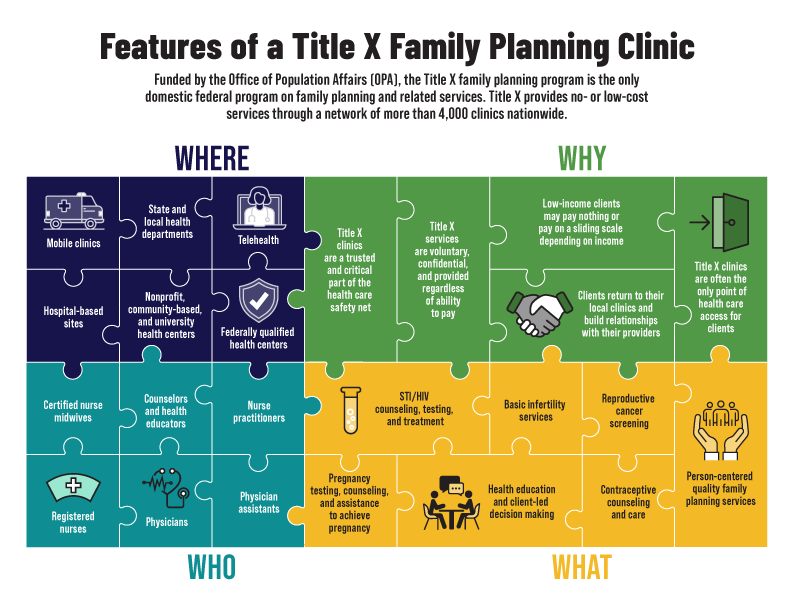The Title X family planning program is a critical part of America’s public health safety net, serving as a point of entry into care for nearly 195 million over the program’s more than 50-year history.
Title X services are guided by the requirements of the Title X statute, regulations, and legislative mandates. Title X projects must ensure that services are provided in a manner that is client-centered, culturally and linguistically appropriate and trauma-informed; protects the dignity of the individual; and ensures quality service delivery consistent with nationally recognized standards of care.
Title X recipients provide clients with a broad range of medically approved family planning services, which includes all Food and Drug Administration (FDA)-approved contraceptive products and natural family planning methods for clients:
- Pregnancy prevention (e.g., birth control) and birth spacing counseling
- Pregnancy testing and counseling
- Assistance to achieve pregnancy
- Basic infertility services
- Sexually transmitted infection (STI) services
- Other preconception health services
Title X services are voluntary, confidential, and provided regardless of one’s ability to pay. For many clients, Title X clinics are their only ongoing source of health care and health education.
Title X clinics may also provide other reproductive health and related preventive health services such as HPV vaccination, provision of HIV pre-exposure prophylaxis (PrEP), breast and cervical cancer screening, and screening for obesity, smoking, drug and alcohol use, mental health, and intimate partner violence.
 An official website of the United States government
An official website of the United States government
